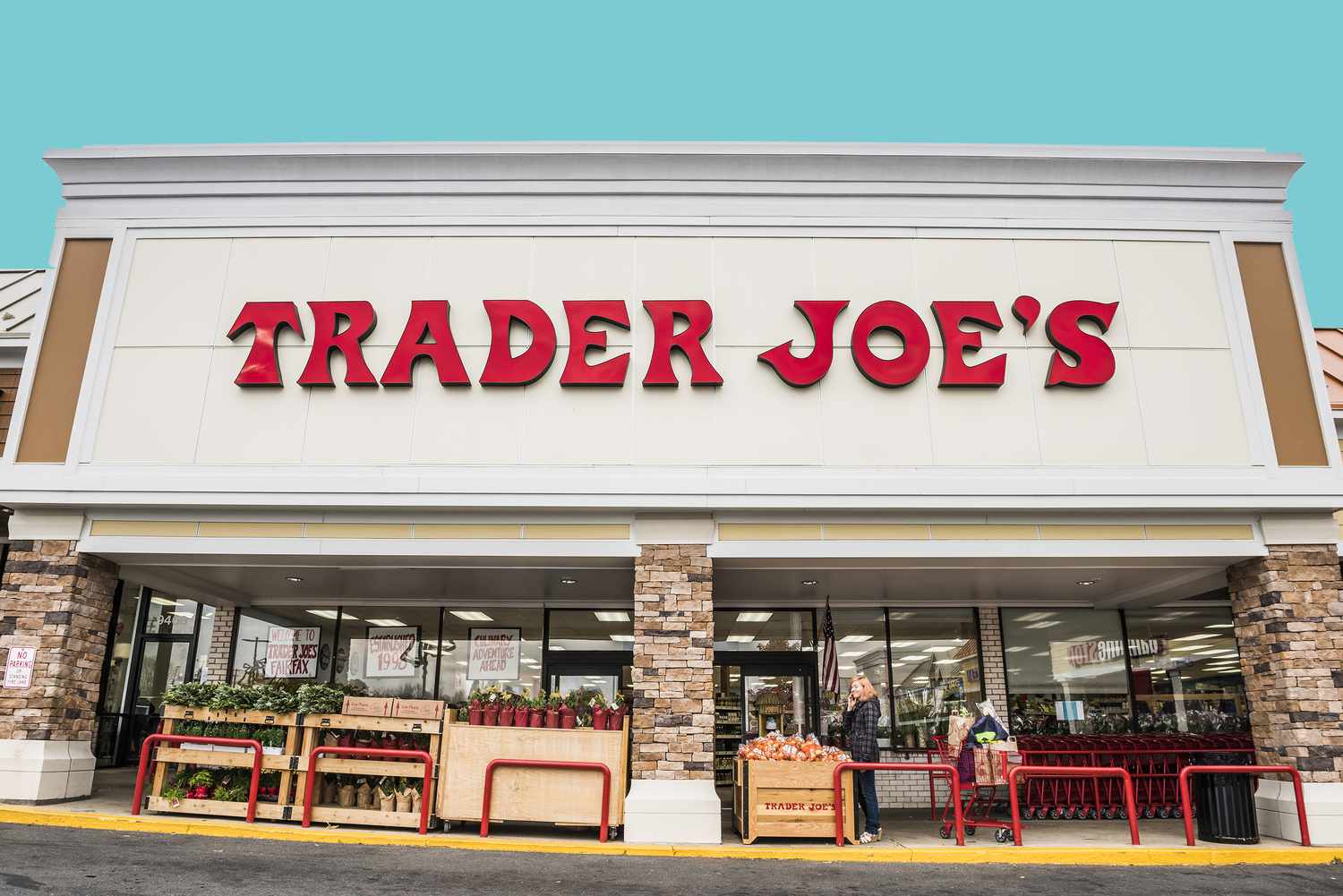Trader Joe’s is a beloved and distinctive grocery store chain that has earned a dedicated following for its unique approach to retail. Founded in 1958 by Joe Coulombe, Trader Joe’s has established itself as a standout player in the supermarket industry, renowned for its commitment to offering high-quality, affordable, and globally inspired products in an unconventional and fun shopping environment.
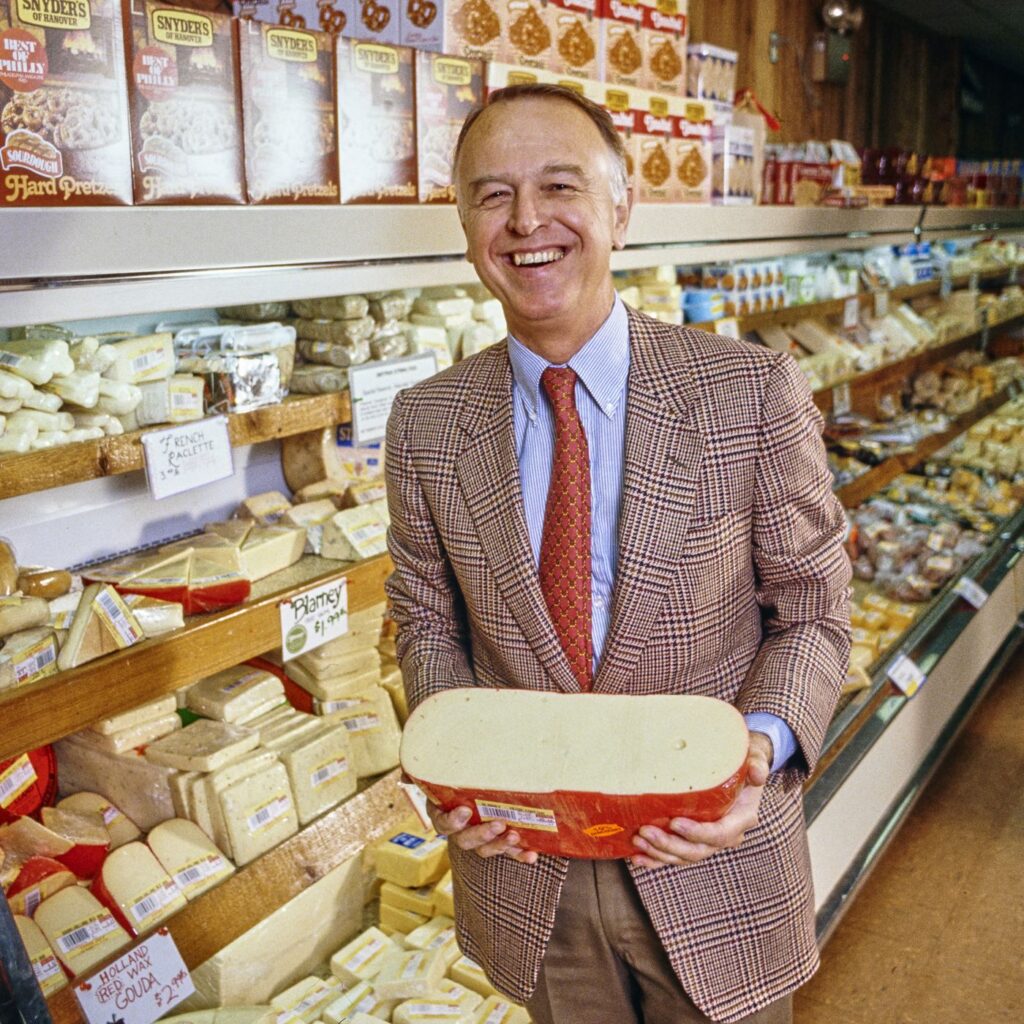
The chain was owned by German entrepreneur Theo Albrecht from 1979 until his death in 2010, when ownership passed to his heirs. The company has offices in Monrovia, California, and Boston, Massachusetts. Trader Joe’s is known for its unique selection of products, which are often private label brands. The company also has a reputation for its friendly and knowledgeable staff.
Trader Joe’s has over 560 stores in the United States and employs over 40,000 people. The company’s headquarters are located in Monrovia, California, and it has distribution centers in California, Pennsylvania, and Illinois.
Trader Joe’s is celebrated for its curated selection of private-label products, which comprise the majority of items on its shelves. These exclusive offerings are carefully sourced and crafted to meet high-quality standards while maintaining competitive prices. This commitment to private labeling allows Trader Joe’s to pass on cost savings to customers and maintain a level of quality control that has become synonymous with the brand.
Some of the company’s most popular private label brands include:
- Two Buck Chuck: A California wine that is sold for $2.99 per bottle.
- Joe-Joe’s: A chocolate chip cookie that is sold in a variety of flavors.
- Unexpected Cheddar: A sharp cheddar cheese that is sold in a variety of flavors.
- Everything But the Bagel Seasoning: A seasoning blend that is used to flavor bagels, but can also be used on other foods.
- Cookie Butter: A spread made from ground-up cookies.
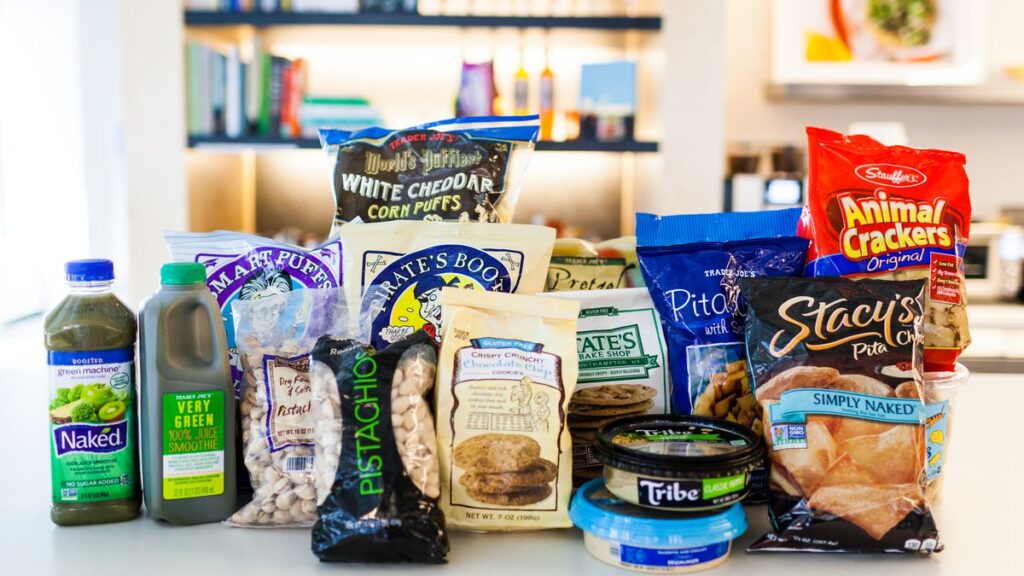
At the heart of Trader Joe’s philosophy is the concept of providing customers with an enjoyable and hassle-free shopping experience. The stores are characterized by their warm and welcoming atmosphere, featuring Hawaiian-shirt-clad employees, hand-painted signage, and an eclectic assortment of products from around the world.
Trader Joe’s also has a reputation for its friendly and knowledgeable staff. The company’s employees are known for being helpful and informative, and they are often willing to go the extra mile to help customers find what they are looking for.
Trader Joe’s is a popular grocery store chain with a loyal following of customers. The company’s unique selection of products, friendly staff, and affordable prices make it a popular choice for shoppers.
Founding History of Trader Joe’s
The founding history of Trader Joe’s is a fascinating journey that began in the mid-20th century and has since evolved into a beloved and iconic grocery store chain. Here’s a detailed account of the founding history of Trader Joe’s:
Early Beginnings (1950s – 1960s):
Trader Joe’s was founded by Joe Coulombe, an entrepreneurial spirit with a vision for a different kind of grocery shopping experience. In 1958, he opened the first Trader Joe’s store in Pasadena, California, originally named “Pronto Markets.”
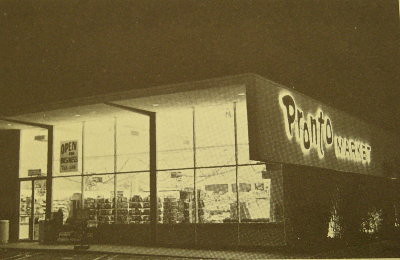
Coulombe’s concept for the store was inspired by a desire to provide affordable, high-quality, and exotic products to a changing demographic in the United States. He recognized that, as post-World War II Americans became more adventurous and interested in international cuisines, there was a growing market for unique and eclectic food offerings.
One of Coulombe’s early innovations was introducing California’s first-ever “discount wine shop,” capitalizing on a niche in the market.
The Evolution into Trader Joe’s (1960s – 1970s):
In 1967, Joe Coulombe rebranded the stores as “Trader Joe’s” to evoke a more adventurous and exotic image. The name was inspired by the South Seas explorers and traders, reflecting the store’s commitment to offering unique and global products.
Trader Joe’s continued to expand and innovate during the 1960s and 1970s. It introduced various private-label products under the “Trader Joe’s” brand, focusing on affordability without compromising quality.
Growth and Expansion (1970s – 1980s):
Throughout the 1970s and 1980s, Trader Joe’s expanded its presence, opening stores throughout California and eventually into other states.
The store’s focus on providing a distinctive shopping experience, unique products, and a friendly and helpful staff became key elements of its success.
Acquisition by Aldi Nord (1979):
In 1979, Trader Joe’s was acquired by the German company Aldi Nord, a major international grocery retailer. Despite the acquisition, Trader Joe’s continued to operate independently and maintain its unique identity.
Unique Business Practices (1980s – Present):
Trader Joe’s has maintained its tradition of introducing innovative and unconventional products, many of which have garnered cult followings. The store’s iconic “Fearless Flyer” catalogs, featuring new and seasonal items, have become highly anticipated by customers.
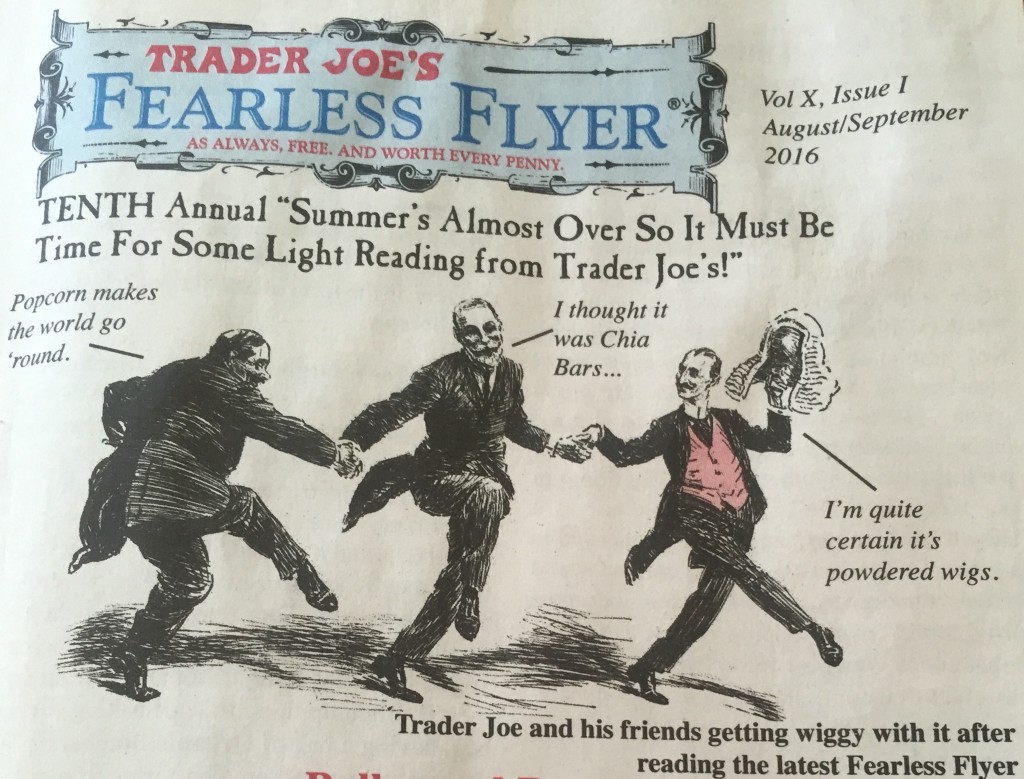
The company has a strict policy of not engaging in traditional advertising, relying instead on word-of-mouth marketing and a dedicated customer base.
Trader Joe’s is known for its commitment to environmental sustainability, including reducing packaging waste, sourcing ethically and responsibly, and offering organic and health-conscious options.
Continued Expansion and Success (1990s – Present):
Trader Joe’s has continued to grow and expand its footprint across the United States. Its emphasis on providing a unique and enjoyable shopping experience, along with high-quality, affordable products, has resonated with consumers.
The company’s store count has steadily increased, with hundreds of locations in various states.
The founding history of Trader Joe’s reflects the vision and entrepreneurial spirit of Joe Coulombe, who recognized the changing tastes and preferences of American consumers and created a grocery shopping experience that has become a beloved institution. Today, Trader Joe’s remains a quintessential part of the American retail landscape, offering a diverse array of products and maintaining its commitment to customer satisfaction and innovation.
Marketing Strategies of Trader Joe’s
Trader Joe’s employs a distinctive and highly successful marketing strategy that sets it apart in the competitive grocery retail industry. The company’s approach combines a focus on unique products, customer experience, store design, and a minimalistic advertising strategy. Here’s a detailed look at Trader Joe’s marketing strategies:
1. Unique Product Selection
Trader Joe’s is known for offering a wide range of specialty grocery items that cater to various dietary restrictions and preferences. The store prides itself on providing healthy and affordable alternatives to traditional supermarket fare. Some of the unique product categories offered by Trader Joe’s include:
Organic produce: Trader Joe’s emphasizes organic and sustainably grown fruits and vegetables sourced from small farms whenever possible. Shoppers can expect to find seasonal selections of fresh produce such as avocados, berries, citrus fruits, leafy greens, herbs, and more.
Natural meat and seafood: The store carries grass-fed beef, free-range poultry, wild-caught fish, and sustainably harvested shellfish. All meats are antibiotic-free and contain no added hormones or preservatives.
Gluten-free and vegan options: Trader Joe’s caters to diverse dietary requirements by stocking gluten-free breads, pastas, snacks, desserts, and supplements. Vegan shoppers will appreciate the variety of plant-based milks, cheeses, eggs, and meat substitutes available year-round.
International cuisine ingredients: From artisan olive oil to exotic spices and condiments, Trader Joe’s imports unique ingredients from all corners of the globe. Shoppers can find hard-to-find ingredients like kimchi, miso paste, curry sauces, and Middle Eastern spice blends.
Specialty dairy products: In addition to standard milk and eggs, Trader Joe’s offers niche dairy items such as Greek yogurt, goat cheese logs, sheep milk ricotta, and lactose-free milk alternatives made from almonds or coconuts.
Gourmet coffee and tea: The store boasts a large selection of single-origin coffees, loose teas, and herbal infusions imported from different parts of the world. Many varieties come in whole bean form ready for grinding just before brewing.
Frozen and refrigerated section: Beyond typical frozen foods like ice cream, Trader Joe’s excels in its vast array of frozen and refrigerated offerings tailored to specific diets and taste buds. These sections feature items like:
Plant-based and paleo-friendly snacks: Nutrition bars, protein bites, fruit and nut mixes, and grain-free crackers designed for those following restricted diets due to allergies or intolerances.
Kombucha and fermented drinks: Alongside an extensive wine collection, Trader Joe’s features a rotating assortment of craft kombuchas, shrubs, switchel tonics, and sparkling waters infused with natural flavors and probiotics.
Artisanal chocolate and sweets: Chocolate lovers can indulge in handcrafted dark, milk, and white chocolate bars, truffles, cookies, and confections made with real sugar and minimal additives.
Trader Joe’s is known for its extensive lineup of private-label products. These store-brand items often feature creative and quirky branding, which adds to the store’s appeal. The private-label approach allows Trader Joe’s to maintain quality while keeping prices competitive.
2. Customer Experience
Friendly and Knowledgeable Staff: Trader Joe’s staff members are known for their approachability and product knowledge. They wear Hawaiian shirts and are readily available to assist customers, enhancing the overall shopping experience.

Store Layout and Design: Trader Joe’s stores are designed to be visually appealing and easy to navigate. The smaller store format and carefully curated product selection contribute to a more focused and efficient shopping experience.
Sampling Stations: Trader Joe’s frequently offers in-store sampling, allowing customers to taste products before purchasing. This not only engages the senses but also encourages trial of new items.
3. Minimal Advertising and Word-of-Mouth Marketing:
Minimal Advertising: Trader Joe’s has historically avoided traditional advertising methods like television commercials, print ads, or radio spots. Instead, they rely heavily on word-of-mouth marketing through satisfied customers who share positive experiences with friends and family. This approach helps keep costs down and fosters a sense of community among loyal patrons.
Word-of-Mouth Marketing: The brand encourages repeat visits and referral business by offering exceptional value and consistent product quality across various categories. Satisfied customers spread the word about their positive experiences with Trader Joe’s, attracting new customers without expensive advertising campaigns.
Limited Advertising Budget: Instead of investing significant funds into advertising efforts, Trader Joe’s allocates resources toward opening new locations, developing private label brands, and supporting employee wages and benefits. By keeping advertising expenses low, the company prioritizes long-term growth and sustainable operations.
Customer Loyalty Program: Unlike most retailers that offer reward programs tied to purchases or points accumulation, Trader Joe’s does not currently operate a formal loyalty program. However, customers remain fiercely devoted to the brand due to the unique shopping experience, affordable pricing, and consistently excellent products.
4. Transparency and Value:
At Trader Joe’s, transparency is key to building trust and credibility with customers. The company emphasizes its commitment to providing clear and honest communication regarding product origins, ingredients, and nutritional content. For example, every item sold in store includes a transparent label detailing its contents, including any potential allergens or artificial additives. Additionally, Trader Joe’s publishes its “Code of Conduct” online, outlining ethical guidelines for suppliers and vendors to ensure responsible sourcing practices throughout the entire supply chain.
Value Proposition:
Trader Joe’s offers premium quality products at accessible price points, appealing to budget-conscious consumers seeking healthy options without sacrificing taste or convenience. The brand positions itself as a purveyor of specialty foods and household essentials available at reasonable prices, differentiating it from upscale gourmet markets or mass merchandisers. To achieve this balance between quality and affordability, Trader Joe’s leverages its own private label products and partnerships with artisan producers worldwide to negotiate favorable terms and pass savings along to customers.
Pricing Strategy:
To maintain profitability while remaining competitive on price, Trader Joe’s employs several tactics:
- Private Label Products: Developing exclusive brands allows Trader Joe’s to control costs and maximize margins since there are no licensing fees paid to external companies. These products also benefit from economies of scale when produced in large quantities.
- Seasonal Promotions: Offering temporary discounts or bundled packages during peak seasons (e.g., Thanksgiving turkey dinner kits) keeps prices competitive without eroding overall margins.
- Sustainable Practices: The brand incorporates environmentally friendly initiatives such as compostable packaging, reusable bags, and eco-friendly cleaning supplies to reduce waste and minimize environmental impact.
5. Store Locations and Expansion:
Trader Joe’s strategic store location decisions play a crucial role in expanding its reach and enhancing its reputation as a convenient destination for shoppers seeking high-quality groceries. Key factors influencing site selection include population density, competition levels, accessibility, and proximity to complementary businesses.
Strategic Store Locations:
- Urban Areas: Stores situated near dense residential neighborhoods cater to busy professionals and families looking for quick, easy shopping trips close to home or work.
- College Towns: Campuses often host young adults interested in trying new products and exploring different cuisine options. Plus, students appreciate the affordable prices and convenient locations near campus housing.
- Tourist Destinations: Visitors to popular vacation destinations seek fresh, ready-to-eat meals and snacks for their stays. Having a nearby Trader Joe’s ensures visitors can easily find high-quality provisions for cookouts or picnics.
Gradual Expansion:
Rather than rapidly opening numerous stores nationwide, Trader Joe’s prefers a measured expansion plan focused on establishing strong roots before branching out further. This approach enables the company to fine-tune its processes, build brand awareness locally, and develop a loyal customer base before venturing into new territories. As a result, each new store opening generates excitement and anticipation among both current customers and prospective ones in neighboring regions.
6. Seasonal and Limited-Edition Offerings:
Trader Joe’s capitalizes on consumer interest in unique and timely products by introducing seasonal and limited-edition items that create buzz around its brand. By offering exclusive products only available for a short period, Trader Joe’s fosters a sense of urgency and encourages repeat visits from customers eager to try new flavors and varieties.
Key Components:
Seasonality: Trader Joe’s takes advantage of holidays, weather patterns, and cultural events to introduce thematic products tailored to specific times of year. Examples include pumpkin spice items in autumn, chocolate covered pretzels for Valentine’s Day, and summertime fruit bars.
Limited Availability: Many seasonal and limited-edition items have finite production runs, creating scarcity and exclusivity. Customers know they must act quickly to secure their favorite treats before they sell out, driving foot traffic and boosting sales.
Collaborative Creativity: Trader Joe’s collaborates closely with suppliers and manufacturers to design exclusive products showcasing innovative ingredients or novel twists on classic recipes. This cooperative spirit helps generate enthusiasm among customers who value the opportunity to sample cutting-edge creations.
Social Media Engagement: Trader Joe’s promotes its seasonal and limited-edition offerings through social media platforms like Instagram, Facebook, and Twitter. Posts featuring colorful images and mouthwatering descriptions encourage followers to share their experiences and tag friends, amplifying word-of-mouth advertising.
Overall, Trader Joe’s utilizes seasonal and limited-edition offerings as a powerful marketing tool to attract and retain customers hungry for unique culinary adventures.
Trader Joe’s marketing strategy is unique in the retail industry, emphasizing a focus on the customer experience, a commitment to quality and value, and a minimalistic approach to advertising. This combination has earned the brand a dedicated following and positions it as a standout player in the grocery retail landscape.
Marketing Mix of Trader Joe’s
Trader Joe’s has crafted a distinctive marketing mix, also known as the 4Ps (Product, Price, Place, and Promotion), that sets it apart in the competitive grocery retail industry. Below, we’ll delve into the details of each element of Trader Joe’s marketing mix:
Product:
-
- Unique Private-Label Products: Trader Joe’s places a strong emphasis on offering private-label products under its own brand name. These exclusive products are carefully sourced and developed to meet high-quality standards while maintaining competitive prices. The uniqueness of these products sets Trader Joe’s apart from other grocery retailers.
- Global and Exotic Flavors: Trader Joe’s is known for its diverse selection of international and exotic foods and ingredients. Their product range includes items that are not commonly found in traditional grocery stores, catering to customers seeking global and unique flavors.
- Limited-Edition and Seasonal Offerings: Trader Joe’s frequently introduces limited-edition and seasonal products, creating a sense of urgency and excitement among customers. These products are often tied to specific holidays or seasons and contribute to the store’s dynamic and ever-changing inventory.
- Health-Conscious and Organic Options: Trader Joe’s offers a range of health-conscious and organic products, aligning with the growing consumer demand for healthier food choices.
Price:
-
- Competitive Pricing: While not always the lowest-priced option, Trader Joe’s maintains competitive pricing. Customers often perceive good value in the quality and uniqueness of the products.
- Private Label Affordability: Trader Joe’s private-label products are priced lower than many national brands, allowing customers to enjoy quality products at a lower cost.
- Value Perception: Trader Joe’s focuses on creating a perception of value by offering high-quality products that are competitively priced.
Place:
-
- Store Location Selection: Trader Joe’s strategically selects store locations, often targeting areas with a specific demographic profile that aligns with its customer base. The stores are typically located in well-trafficked areas.
- Store Layout and Design: Trader Joe’s stores are designed to be visually appealing, easy to navigate, and efficient. Their smaller store format and carefully curated product selection contribute to a focused and enjoyable shopping experience.
- Online Shopping: Trader Joe’s has ventured into online shopping and offers some products through its website. However, its primary focus remains on in-store shopping.
Promotion:
-
- Minimal Advertising: Trader Joe’s follows a minimalistic advertising strategy. It does not engage in traditional advertising campaigns. Instead, the company relies on word-of-mouth marketing and the allure of its unique products and shopping experience.
- Sampling Stations: Trader Joe’s frequently offers in-store sampling, allowing customers to taste products before purchasing. This not only engages the senses but also encourages trial of new items.
- Seasonal and Limited-Edition Promotions: The company generates excitement by promoting its seasonal and limited-edition products, often through in-store signage and its “Fearless Flyer” catalogs.
- Customer Loyalty: Trader Joe’s cultivates customer loyalty through consistently delivering high-quality products and personalized service. Satisfied customers become brand advocates, recommending the store to friends and family.
Trader Joe’s marketing mix reflects its commitment to offering unique, high-quality products at competitive prices in a welcoming and enjoyable shopping environment. By focusing on the essentials of its marketing strategy and creating a memorable customer experience, Trader Joe’s has built a strong and loyal customer base in the grocery retail industry.
Also Read: Retail Reinvention: Marketing Strategies of Target Corporation
To read more content like this, subscribe to our newsletter
